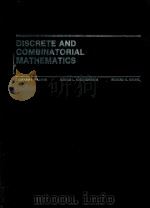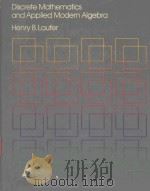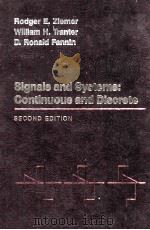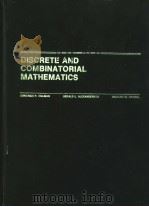《discrete mathematics:elementary and beyodn P290》
| 作者 | 编者 |
|---|---|
| 出版 | 未查询到或未知 |
| 参考页数 | |
| 出版时间 | 没有确切时间的资料 目录预览 |
| ISBN号 | 无 — 求助条款 |
| PDF编号 | 820555918(仅供预览,未存储实际文件) |
| 求助格式 | 扫描PDF(若分多册发行,每次仅能受理1册) |

1Let’s Count!1
1.1 A Party1
1.2 Sets and the Like4
1.3 The Number of Subsets9
1.4 The Approximate Number of Subsets14
1.5 Sequences15
1.6 Permutations17
1.7 The Number of Ordered Subsets19
1.8 The Number of Subsets of a Given Size20
2Combinatorial Tools25
2.1 Induction25
2.2 Comparing and Estimating Numbers30
2.3 Inclusion-Exclusion32
2.4 Pigeonholes34
2.5 The Twin Paradox and the Good Old Logarithm37
3Binomial Coefficients and Pascal’s Triangle43
3.1 The Binomial Theorem43
3.2 Distributing Presents45
3.3 Anagrams46
3.4 Distributing Money48
3.5 Pascals Triangle49
3.6 Identities in Pascals Triangle50
3.7 A Birds-Eyc View of Pascals Triangle54
3.8 An Eagles-Eye View: Fine Details57
4Fibonacci Numbers65
4.1 Fibonaccis Exercise65
4.2 Lots of Identities68
4.3 A Forinula for the Fibonacci Nurnbers71
5Combinatorial Probability77
5.1 Events and Probabilities77
5.2 Independent Repetition of an Experiment79
5.3 The Law of Large Numbers80
5.4 The Law of Small Numbers and the Law of Very Large Nuun-bers83
6Integers, Divisors, and Primes87
6.1 Divisibility of Integers87
6.2 Primes and Their History88
6.3 Factorization into Primes90
6.4 On the Set of Primes93
6.5 Fermat’s“Littlc” Theorem97
6.6 The Euclidean Algorithm99
6.7 Congrucnccs105
6.8 Strange Numbers107
6.9 Nnnnber Theory and Conmbinatorics114
6.10 How to Tcst Whether a Number is a Prime?117
7Graphs125
7.1 Even and Odd Degrees125
7.2 Paths, Cycles, and Connectivity130
7.3 Eulerian Walks and Hamiltonian Cycles135
8Trees141
8.1 How to Define Trees141
8.2 How to Grow Trees143
8.3 How to Count Trees?146
8.4 How to Store Trees148
8.5 The Number of Unlabeled Trees153
9Finding the Optimum157
9.1 Finding the Best Tree157
9.2 The Traveling Salesman Problem161
10 Matchings in Graphs165
10.1 A Dancing Problem165
10.2 Another matching problem167
10.3 The Main Theorem169
10.4 How to Find a Perfect Matching171
11 Combinatorics in Geometry179
11.1 Intersections of Diagonals179
11.2 Counting regions181
11.3 Convex Polygons184
12 Euler’s Formula189
12.1 A Planet Under Attack189
12.2 Planar Graphs192
12.3 Eulers Formula for Polyhedra194
13 Coloring Maps and Graphs197
13.1 Coloring Regions with Two Colors197
13.2 Coloring Graphs with Two Colors199
13.3 Coloring graphs with many colors202
13.4 Mlap Coloring and the Four Color Theorem204
14 Finite Geometries, Codes,Latin Squares,and Other Pretty Creatures211
14.1 Small Exotic Worlds211
14.2 Finite Affine and Projective Planes217
14.3 Block Designs220
14.4 Steiner Systems224
14.5 Latin Squares229
14.6 Codes232
15 A Glimpse of Complexity and Cryptography239
15.1 A Connecticut Class in King Arthur’s Court239
15.2 Classical Cryptography242
15.3 How to Save the Last Move in Chess244
15.4 How to Verify a Password—Without Learning it246
15.5 How to Find These Primes246
15.6 Public Key Cryptography247
16 Answers to Exercises251
Index287
《discrete mathematics:elementary and beyodn P290》由于是年代较久的资料都绝版了,几乎不可能购买到实物。如果大家为了学习确实需要,可向博主求助其电子版PDF文件。对合法合规的求助,我会当即受理并将下载地址发送给你。
高度相关资料
-

- Discrete and combinatorial mathematics
- 1987 Dellem
-

- Generators and Relations For Discrete Groups
- 1957 Springer-Verlag
-

- Discrete gambling and stochastic games
- 1996 Springer
-

- Discrete transforms and their applications
- 1985 Van Nostrand Reinhold
-

- Harmonic analysis and discrete potential theory
- 1992 Plenum Press
-

- DISCRETE AND SYSTEM MODELS
- 1983 SPRINGER
-

- DISCRETE MATHEMATICS AND APPLIED MODERN ALGEBRA
- 1984 COPYRIGHT
-

- DISCRETE DYNAMICAL SYSTEMS THEORY AND APPLICATIONS
- 1990 CLARENDON PRESS
-

- SIGNALS AND SYSTEMS:CONTINUOUS AND DISCRETE SECOND EDITION
- 1989 MACMILLAN PUBLISHING COMPANY
-

- DISCRETE INTEGRABLE GEOMETRY AND PHYSICS
- 1999 CLARENDON PRESS
-

- DISCRETE AND COMBINATORIAL MATHEMATICS
- 1987 DELLEN PUBLISHING COMPANY
提示:百度云已更名为百度网盘(百度盘),天翼云盘、微盘下载地址……暂未提供。➥ PDF文字可复制化或转WORD



